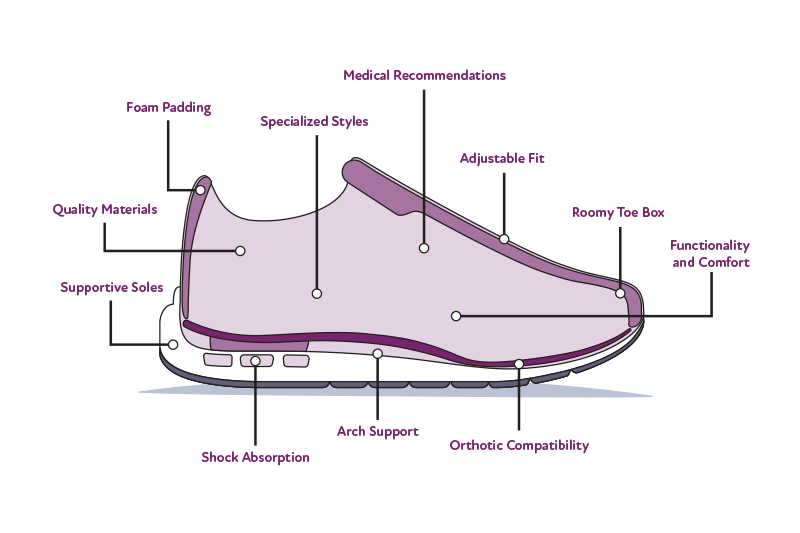What makes a shoe an Orthopaedic shoe?
Orthopaedic shoes are specially designed footwear that aims to provide comfort, support, and relief for individuals with various foot-related conditions or discomforts. These shoes are often prescribed by healthcare professionals such as orthopaedic doctors, podiatrists, or physical therapists to address specific foot problems and improve overall foot health.
Several key factors contribute to making a shoe orthopaedic:
1. Arch Support: Orthopaedic shoes often have built-in arch support to maintain the natural arches of the foot and reduce strain on the arch area.
2. Cushioning and Shock Absorption: These shoes feature extra cushioning in the insoles to provide shock absorption and alleviate pressure on sensitive areas of the feet.
3. Anatomical Design: Orthopaedic shoes are designed to follow the natural contours of the foot, promoting proper alignment and reducing stress on joints and muscles.
4. Wide Width and Adjustable Fit: Many orthopaedic shoes come in various width options to accommodate different foot shapes and sizes. They may also feature adjustable closures like straps, laces, or buckles to ensure a secure and comfortable fit, especially for individuals with swelling or deformities.
5. Sturdy and Supportive Soles: The soles of orthopaedic shoes are often crafted with materials that provide stability and proper weight distribution. This can be especially helpful for individuals with conditions like flat feet or overpronation.
6. Roomy Toe Boxes: Orthopaedic shoes typically have spacious toe boxes to prevent crowding of the toes, reducing pressure on conditions like bunions and hammertoes.
7. Orthotic Compatibility: Many orthopaedic shoes are designed to accommodate custom orthotic inserts. Orthotic inserts are prescribed by healthcare professionals to provide additional support and correction for specific foot issues.
8. Quality Materials: Orthopaedic shoes are often made from high-quality, durable materials to ensure longevity and comfort over time.
9. Functionality and Comfort: These shoes are designed with the wearer’s comfort and functionality in mind. They aim to alleviate pain, improve posture, and enhance overall foot health.
10. Specialized Styles: Orthopaedic shoes are available in various styles, from casual to dressy, to suit different occasions and personal preferences.
11. Medical Recommendations: Orthopaedic shoes are often recommended or prescribed by healthcare professionals, such as orthopaedic doctors, podiatrists, or physical therapists, to address specific foot conditions or issues.
Orthopaedic shoes can be used to address a wide range of foot problems, including:
Orthopaedic shoes can be used to address a wide range of foot problems, including:
• Plantar fasciitis
• Bunions
• Hammertoes
• Flat feet
• High arches
• Diabetic foot conditions
• Arthritis-related foot pain
• Foot deformities
• Overpronation or supination
It’s important to note that orthopaedic shoes come in various styles, from casual to dressy, so individuals can find options that suit their preferences while still providing the necessary support and comfort. If you have specific foot concerns, it’s recommended to consult with a medical professional to determine whether orthopaedic shoes are appropriate for your situation and to receive personalized recommendations.



